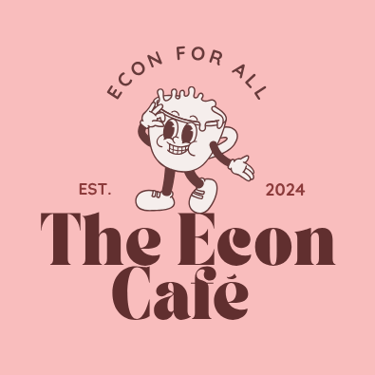Consumerism: Humanity’s Most Expensive Hobby
BLOGFEATURED
In a world where products go viral overnight, consumerism has evolved from necessity to identity. This piece unpacks the rise of hyper-consumerism in the age of TikTok, trends, and emotional capitalism.
The rumble of people pushing past each other shook the walls. Long lines snaked from the supermarket doors, filled with people wrapped in sleeping bags, clutching caffeine and hope. Screams echoed through the air as fights broke out over the limited stock. Sounds like the opening of a black mirror episode, when in reality, this was the reaction to the Barbie x Stanley Cup collaboration a few months ago.
From camping outside of Apple stores for the next iPhone launch to fans waiting since 4 a.m. for new Yeezy sneakers, consumerism has reached a peak in recent years. But what is consumerism, and what led it to this excessive amount?
Consumerism is defined as a social and economic order that promotes the acquisition of goods and services- suggesting that personal happiness can be intensified through material consumption. The roots can be traced back to the Industrial Revolution, when the introduction of technological advancements shifted the overall economy from an agricultural one to a manufacturing one. This was significant as before, agriculture formed the rudimentary stage of the economy, forming most of society’s economic activity and livelihoods, with most of the output being crops and livestock. The industry was then dominated by industry and machine manufacturing, primarily in the 18th and 19th centuries. This made products more widely accessible. The sudden start of mass production shifted societal values towards increased consumption.
Post World War two, the economy reached a ‘boom’- a period of rapid growth in a country’s economy- and the world experienced the rise of the middle class, suburban life and most importantly, advertising. By the late 20th century, malls grew in popularity, the use of TV marketing accelerated, and brands started to gain loyal customers. Alongside humanity’s development came evolving desires. Little girls traded baby dolls for a shining range of Barbies and their extensive wardrobe, while teenagers moved from chunky Walkmans to collecting cassette tapes from their favourite artists; each purchase was not just a toy or a tape, but a step closer to an identity shaped by aspiration and status. What began as a pursuit of usefulness slowly evolved into a pursuit of self-definition. Owning the latest version of a toy, a phone, or a shoe became a way of saying something about who you were and your status.
Gradually, companies learned that novelty sells, and so began the endless cycle of new drops, limited editions, seasonal collections, and yearly upgrades. Gone were the days when people would buy one phone and use it for years on end. Tech companies now release a new phone almost every year, hyping up its features and letting people know why it is a “must-have”. A phone now isn’t just a tool to call someone; it has become a reflection of status, relevance, and even personality. The desire isn’t just to own one, but to own the latest one to prove your superiority and better fit in with the rest of society.
With this, the shelf life of satisfaction shortened. Where once a pair of headphones or shoes lasted for years, designed for multiple uses, now trends come and go in the span of a scroll on social media. The next best thing is always just a click away. Especially in the fashion and tech industry, new products were designed with the predetermination that they would one day become outdated or fall behind compared to their newer counterparts. Pushing consumers into a loop of the constant need to replace and keep up, new marketing strategies planted the seed that what you previously owned wasn’t old- but irrelevant. Online, the cycle sped up. A single viral video could turn a $10 water bottle into a must-have luxury. What mattered wasn’t quality- it was visibility. Watching influencers flaunt the latest lip gloss doesn’t just spark interest- it manufactures need, as fans chase a fragment of the lifestyle they’re sold and to feel a little closer to the person behind the screen. Social media no longer just reflects our desires; it has engineered them. Algorithms feed us new wants before we even realise we had them; things we would have never thought of purchasing now enter our Christmas wishlists.
However, unlike tech or sneakers, a Stanley Cup is a water bottle. That’s what makes the craze and hype surrounding it fascinating- the amount of importance once put to things such as PS5s was applied to something simple, everyday, and utilitarian. It’s consumerism not for function, but for vibe, colour, aesthetic, and belonging with people completely (and ironically) missing the point of the cup in the first place. Individuals on TikTok now proudly post videos showing off their collections, consisting of sometimes dozens of cups, despite the fact that it’s supposed to be reusable, making such mass buying a contradiction of its very purpose. Young kids that don't have a Stanley may even get bullied for not having one, feeding into the idea that getting one is more about feeling superior and having a higher status.
What once began as innovation driven by necessity has morphed into a race of endless wants- a culture of endless refresh where new Stanley Cups appear seemingly every day. We no longer wait for things to break before replacing them. We replace them because the internet told us to, and because buying them makes us feel a fleeting sense of belonging in a world that constantly demands more.
